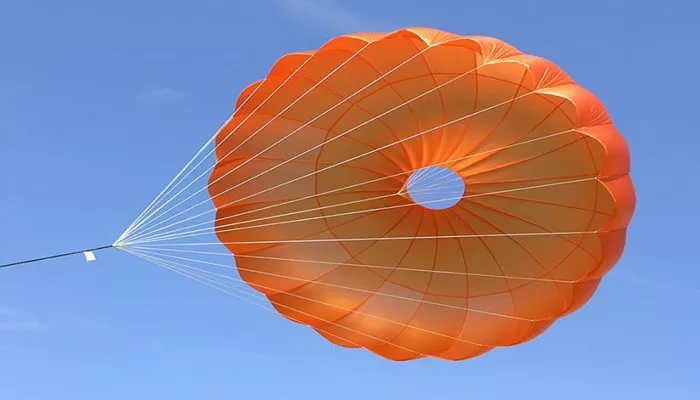Emergency parachutes are critical safety devices designed to save lives in situations where the main parachute fails or when an aircraft emergency requires immediate egress. Whether you are an extreme sports enthusiast, a skydiver, or an aviator, understanding the function, operation, and importance of emergency parachutes is vital. This article provides a comprehensive overview of emergency parachutes, their mechanisms, usage, risks, and safety protocols in clear, simple terms.
What Is an Emergency Parachute?
An emergency parachute, often called a reserve parachute, is a secondary parachute carried by skydivers and aviators. It is designed to be deployed if the main parachute malfunctions or if the user must exit an aircraft in an emergency. Unlike the main parachute, which is used for the planned descent, the emergency parachute acts as a backup to ensure survival when things go wrong.
Why Are Emergency Parachutes Necessary?
Parachuting is an extreme sport and a high-risk activity involving rapid descent from high altitudes. Despite advances in technology and training, malfunctions of the main parachute still occur. About one in every 750 main parachute deployments results in a malfunction, which can include partial or total failure to open properly. The reserve parachute provides a critical safety net, drastically reducing the risk of fatality.
In addition to sport parachuting, emergency parachutes are used by military personnel, aviators, and special operations forces to escape aircraft that cannot land safely. They are also essential for aerobatic pilots and those flying experimental aircraft.
Components of an Emergency Parachute System
A typical parachute rig contains two parachutes: the main and the reserve. Each has its own container and deployment system.
Main Parachute: Deployed manually by the jumper, usually by throwing out a pilot chute that pulls the canopy out of its container.
Reserve Parachute: Packed and maintained to higher standards, designed to be more reliable. It is deployed only in emergencies after the main parachute is cut away.
The system includes two key handles on the harness:
Cutaway Handle: Located on the right side of the chest, used to release the malfunctioning main parachute.
Reserve Handle: Located on the left side, used to deploy the reserve parachute after the main is cut away.
Some rigs also feature a Reserve Static Line (RSL), which automatically deploys the reserve parachute when the main is cut away, speeding up the emergency response.
How Does Emergency Parachute Deployment Work?
When a skydiver detects a malfunction of the main parachute that cannot be corrected, they perform emergency procedures:
Cutaway: The jumper pulls the cutaway handle to release the main parachute from the harness.
Deploy Reserve: Immediately after, the reserve handle is pulled to deploy the reserve parachute.
The reserve parachute is then extracted by a spring-loaded pilot chute, which inflates and pulls the canopy out of its container.
This sequence must be performed quickly and efficiently to maximize the chance of a safe landing.
Common Causes of Emergency Parachute Use
Emergency parachutes are deployed in various situations, including:
Main Parachute Malfunction: Includes line twists, partial openings, or canopy collapse.
Canopy Collisions: When parachutes become entangled with other jumpers’ canopies, causing loss of control.
Unsafe Maneuvers: High-speed turns or swooping close to the ground can cause loss of control and require emergency deployment.
Changing Wind Conditions: Sudden gusts or turbulence can destabilize the main canopy, forcing reserve use.
Aircraft Emergencies: Aviators may need to bail out if the aircraft is uncontrollable or damaged.
Safety And Training for Emergency Parachute Use
Proper training is essential to safely use an emergency parachute. Most skydiving courses include ground instruction focusing on:
Recognizing malfunction signs quickly.
Performing cutaway and reserve deployment procedures.
Executing proper parachute landing falls (PLF) to minimize injury during landing.
Emergency parachute training significantly increases survival chances in an emergency. Even a single jump with an emergency parachute is better than none, as it greatly improves the odds of survival.
Risks And Injuries Related to Emergency Parachutes
While emergency parachutes save lives, their deployment is not without risks:
Injuries on Landing: Most parachuting injuries occur during landing, especially if the parachutist lands improperly or at high speed.
Reserve Parachute Malfunction: Although rare, reserve parachutes can also malfunction, especially if the main parachute cannot be cut away properly.
Delayed Deployment: Hesitation or slow reaction in deploying the reserve can reduce the altitude available for safe canopy inflation.
Wearing supportive footwear and practicing proper landing techniques can reduce injury risks.
Emergency Parachutes in Different Parachuting Disciplines
Different parachuting disciplines have varying risk profiles for emergency parachute use:
Sport Skydiving: Typically involves two parachutes and strict safety protocols.
BASE Jumping and Wingsuit Flying: Higher risk due to lower altitudes and complex maneuvers; emergency parachute use requires advanced skills.
Military and Aerobatic Pilots: Often rely on emergency parachutes as a last resort during aircraft emergencies.
Technological Advances And Regulations
Modern parachute systems incorporate technological improvements for safety:
Reserve Static Lines (RSL): Automatically deploy the reserve parachute upon cutaway, reducing reaction time.
Altitude Awareness Devices: Help jumpers know when to deploy their parachutes, minimizing human error.
Rigorous Packing and Inspection: Reserve parachutes are packed by certified riggers and inspected regularly to ensure reliability.
Regulatory bodies like the U.S. Federal Aviation Administration and the United States Parachute Association mandate the use of reserve parachutes in sport skydiving.
Conclusion
Emergency parachutes are indispensable safety equipment in parachuting and aviation. They provide a crucial second chance when the main parachute fails or when an emergency exit from an aircraft is necessary. Understanding their operation, practicing emergency procedures, and respecting safety protocols dramatically improve survival odds and reduce injury risk. Whether you are a novice or an experienced jumper, knowledge and respect for emergency parachutes are fundamental to safe parachuting.

